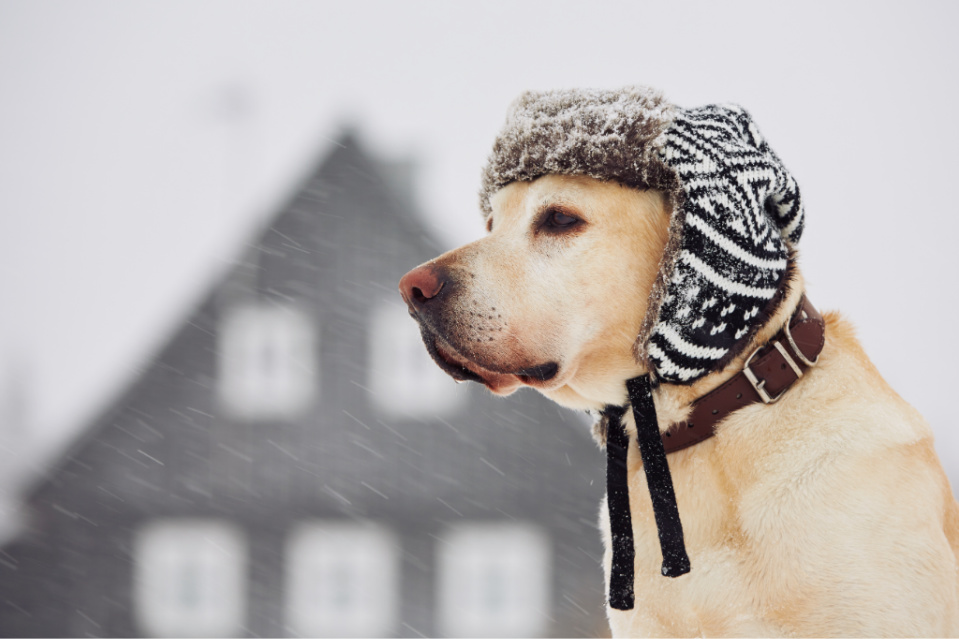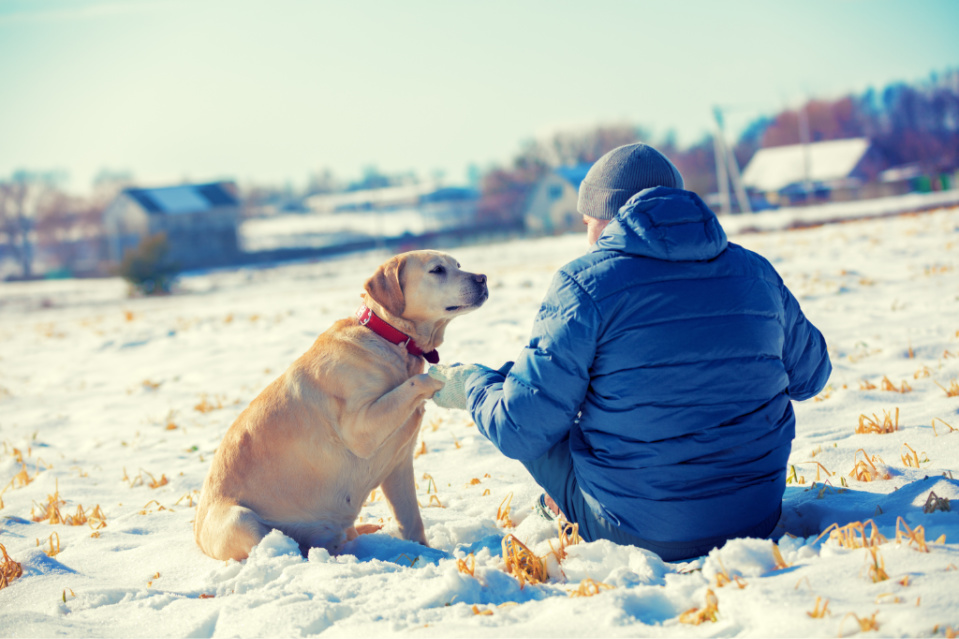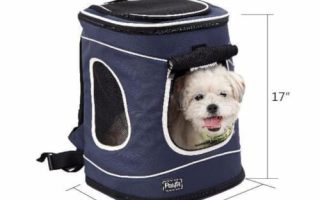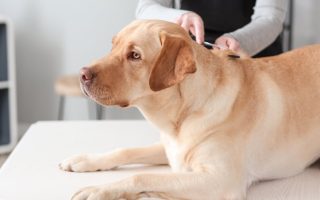People know of Labrador Retrievers as good outside dogs. However, for pet owners who are living in cold regions and are thinking of having a Lab in their home, you might ask, “Do Labradors get cold?”
It is a perfectly understandable question considering the way Labs look and the history of their breed.
So, to address your concerns about the cold and how they may affect your Labradors. We’re discussing the topic more below.
Do Labradors get cold?
Labradors can tolerate cold weather, but they do not get cold very easily.
Labradors, formerly named St. John’s Dogs, come from Newfoundland in Canada, which is a notoriously frigid place.
New foundland has an average daily temperature that can range from 32 degrees Fahrenheit (during winters) to 61 degrees Fahrenheit (during summers).
Not only did the little canines at the time help fishermen pull in the nets full of fish; Labs also had to swim in cold waters to catch any escaping fish.
Therefore, Labrador Retrievers already know how to withstand cold temperatures pretty well since the very beginning.
This may also be thanks to their double coats, which we will discuss further below.
However, just because they can handle the cold does not mean that Labradors are completely immune to it.
On the contrary, pet owners should make it a point not to expose their Labrador Retrievers to extremely harsh temperatures, as this can affect their health.
How cold is too cold for Labradors?

One question you may have is this: “Is 50 degrees too cold for Labrador?”
Well, actually, it’s difficult to say how the cold registers for Labs.
Although Labrador Retrievers can swim in ice-cold waters, and they love the snow. They cannot stay in it for a long time. Otherwise, you may end up sacrificing their health and well-being.
Generally, you will want to keep your Lab indoors if the temperature is under 20 degrees Fahrenheit.
However, it is not the same for every Labrador.
There are five main factors that you will have to consider to determine the degree of coldness that your Lab can tolerate.
1. Wind chill factor
This refers to how warm-blooded creatures perceive the temperature in their surroundings to be lower than it actually is as a result of the passing air that brings with it a lower temperature.
For example, you may think that you can take out your little canine when the day registers a temperature of 27 degrees Fahrenheit.
While it already is a pretty cold day in itself, you may have to reconsider prolonging your dog’s exposure to the outside cold if there is a breeze or wind.
2. How used your Labrador is to the cold
Given their breed’s history with the cold, you will still need to know how much experience your Labrador Retriever has with frigid temperatures.
If they haven’t been exposed to prolonged cold, chances are higher that they won’t be able to withstand being out in the cold for long periods of time.
So, if you want to get your Lab used to the cold, you will need to condition them and build up their tolerance for it.
One way you can do this is by taking them out for a short walk several times a day.
Do not overdo it, though. Otherwise, your Labrador Retriever could suffer from frostbite, hypothermia, or other health conditions.
3. How old and heavy your Lab is
The younger the Labradors are, the more they can effectively regulate their body temperatures.
The same can be said of Labs with bulky frames.
So, if your Lab is older or on the leaner side of the weight spectrum, they may struggle to tolerate cold temperatures.
4. What time of day you’re going out
Temperatures tend to drop at nighttime, so your Lab may not be able to withstand the cold at this time.
The ideal temperature for Labrador will be the temperature during the midday since it’s slightly warmer than at night.
To keep your Labrador protected and warm, we advise that you bring them inside your home at night and provide them with a comfortable bed and blankets.
Does my Labrador need a coat in winter?
Your Labrador already has a special kind of fur that some dogs have, which is known as the double coat. As you can guess from the name, it means that your Lab has two coats of fur.
The topcoat or guard coat is abrasive and wiry. Made out of guard hairs, it protects your Lab from superficial wounds.
The second coat or the undercoat is an insulator. The undercoat helps regulate your Lab’s temperature, which is how it keeps your Lab from getting cold easily.
The undercoat gets thicker during the winter to help shield your Labrador Retriever’s skin from cold air.
Once the weather gets warmer, your Lab sheds the excess undercoat to make their skin feel cooler.
That is why Labradors are notorious for heavy shedding during spring and summer seasons.
The mixture of these two coats protects your Lab’s skin from wounds and UV rays. Additionally, it also helps repel water, which helps make your Lab a great swimmer.
This is also the reason why you should never try to shave your Labrador, even if they shed a lot.
Shaving your Labrador’s fur may end up ruining their ability to regulate their own temperature, which makes them more likely to feel very cold or hot.
Additionally, shaving a Lab’s coat will be uncomfortable and itchy for them. The new hairs they will grow will not be the same, as it will feel sharper and wirier.
Plus, you get rid of their natural “sunscreen”.
What should I do if my Labrador looks like they feel cold?

Of course, even with your Labrador’s special coat, it may still not completely protect them from extreme temperatures.
If you notice that your Lab is shaking and shivering during the winter, then they probably feel too cold, and their fur is not helping them stay warm.
What you can do is to try to move them inside your home and give them a bed and a blanket to make them more comfortable and protect them from the chill.
On the other hand, if you still want to keep them outside, then you need to give your Lab the right shelter. You have to create a sturdy dog house that will shield them from the elements.
There are already plenty of well-built, well-insulated dog kennels in the market today that can help keep your dog warm in the winter and cool in the summer, so it shouldn’t be much of a problem.
Just make sure that their shelter is away from places that can get wet because it can make them feel colder.
Here’s a good rule of thumb you can follow:
If the water in your dog’s bowl is cold, then the temperature is too cold for your Lab.
So, while Labradors can sleep outside at night, it would still be ideal to keep your Lab inside the home with you since it is safer and will make them feel more loved.
On another note, you also need to make sure that you aren’t letting moisture get trapped in your Labrador’s fur. While they may look dry, they may be moist or wet under their double coat.
Use a towel to go through their fur and make sure that their skin is dry. Additionally, make it a point to check whether or not their bedding is wet.
Do not forget to consider the wind, especially if your dog will stay outside. While the temperature may be only slightly cold, strong winds can make it feel colder.
Moreover, you have to make sure to give your Lab sufficient fresh, unfrozen water to prevent dehydration.
To sum it up
Generally speaking, Labs can handle the cold, as long as it is not extreme.
Hence, it is vital that you take the necessary precautions to keep your canine buddy safe and warm even during cold days.







